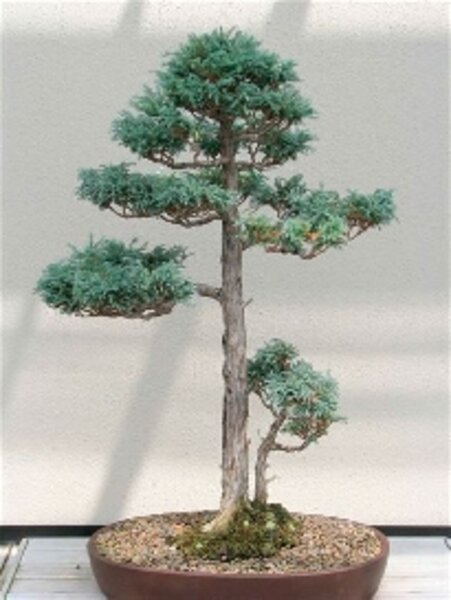He has a passion for bonsai
Loading...
| EDMOND, Okla.
(AP) — Dale Haworth is a "born and raised Okie," but he has a passion for an ancient Eastern art: the art of bonsai.
"I guess it's because they can live forever," he says. There's just something about the tiny versions of ancient oak, evergreen, and pine trees that has kept Mr. Haworth's attention since he began his collection in 1987.
Today, he owns the House of Bonsai, a business he runs out of the greenhouse and cold frame at his home. Hundreds of the miniature trees line the shelves of his "offices," and Haworth spends much of his time caring for them.
"A bonsai is supposed to represent something you've seen in nature like it," he says. "And that's what you're trying to do is capture it in miniature so you can enjoy it wherever you are."
In Japanese, the word "bonsai" means tray-planted and is the art of pruning potted trees so they stay small but true to form. A similar Chinese art, "Penjing," means "tray scenery" and involves creating miniature landscapes of miniature trees and rockery.
Bonsai trees are classified by size ranging from seven inches to four feet in height.
The art of miniaturizing trees began thousands of years ago, possibly in early Egyptian culture, as pictorial records from around 4,000 B.C. depict tiny trees growing from rock containers.
Bonsai trees can look like a mountaintop maple, wind-swept and leaning to the side with a gnarled, twisted trunk. You can use bonsai methods to get perfect miniature replicas of wisteria, blooming with lavender foliage, or magnificent magnolias with fragrant blossoms.
You can miniaturize almost any tree with the art of bonsai. The secret is in the pruning.
"Continually root pruning and trimming them keeps them small," Haworth says.
"Each spring, gently dig the root ball of your bonsai tree from its pot and trim back the root growth. You can trim back the branches and leaves with your fingers or scissors when they grow beyond the desired shape."
Caring for your bonsai is an art form in itself, but beginners can be successful with some basic knowledge.
One of the most common mistakes is keeping an outdoor bonsai indoors. While some bonsai are well-suited to indoor life, many, such as evergreens and oaks, require the same fresh air, sunlight, and humidity as their full-size relatives. These trees require a cold, dormant stage, and most will lose their leaves in winter.
But some outdoor varieties of bonsai, such as junipers, can't tolerate temperatures below 30 degrees and must be protected during extremely cold weather. Tropical and deciduous tree species such as ficus or palms can be successfully grown indoors year-round.
Fertilize your bonsai regularly. Haworth recommends spraying the root systems with a water-soluble fertilizer every other week and using a time-release fertilizer such as Osmocote each spring.
How much you water your bonsai depends largely on the type of tree, its location, and other conditions such as humidity, sunlight, wind, potting method, and soil.
In general, bonsai don't like soggy roots. They usually are planted in containers with big drainage holes so water will not collect at the roots. This means they need watering often, since most of the water will drain.
Haworth invites anyone interested in learning more about bonsai trees to attend a meeting of a bonsai society. He is a founding member of the Oklahoma Bonsai Society.
(NOTE: We invite you to visit the main page of the Monitor’s gardening site , where you can find many articles, essays, and blog posts on various garden topics.)





